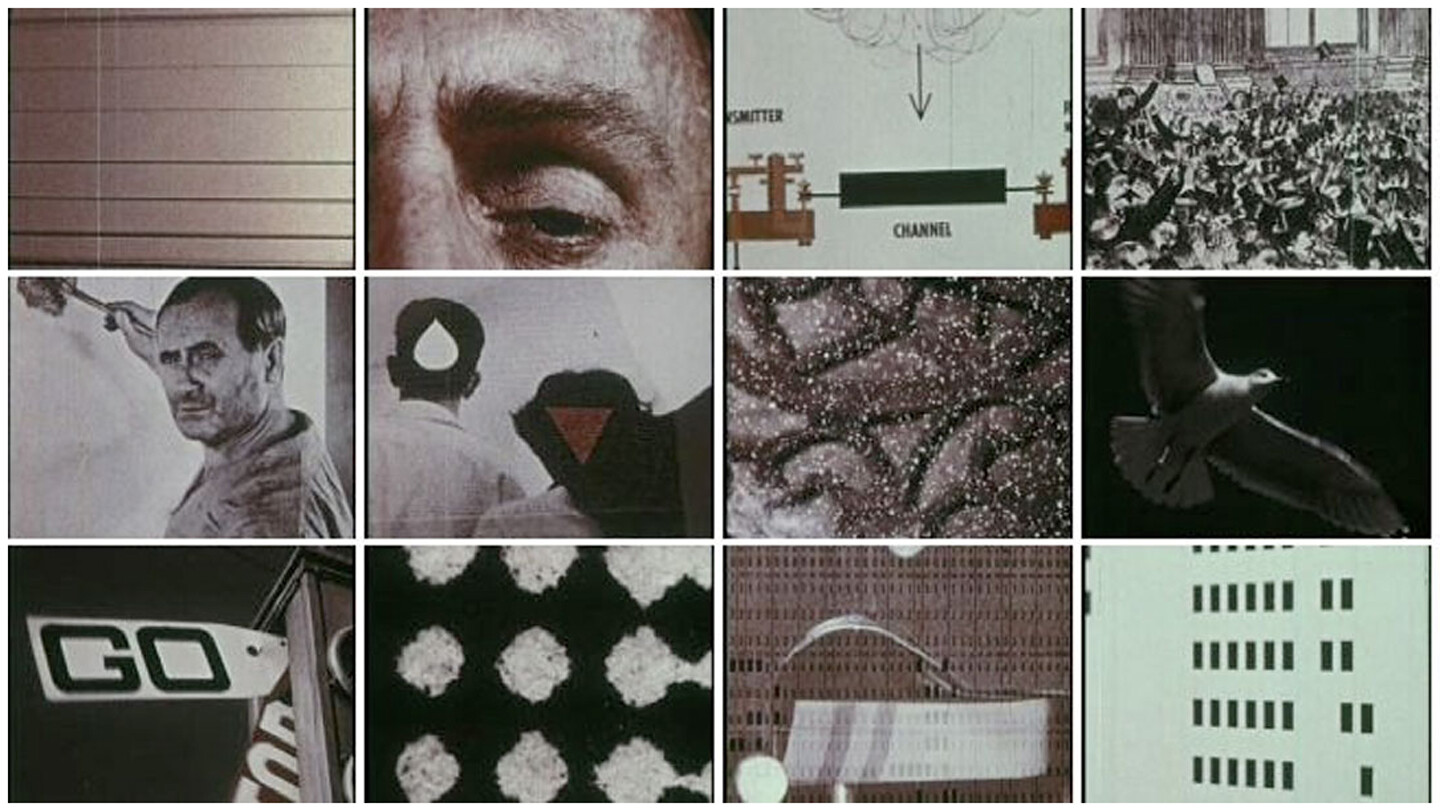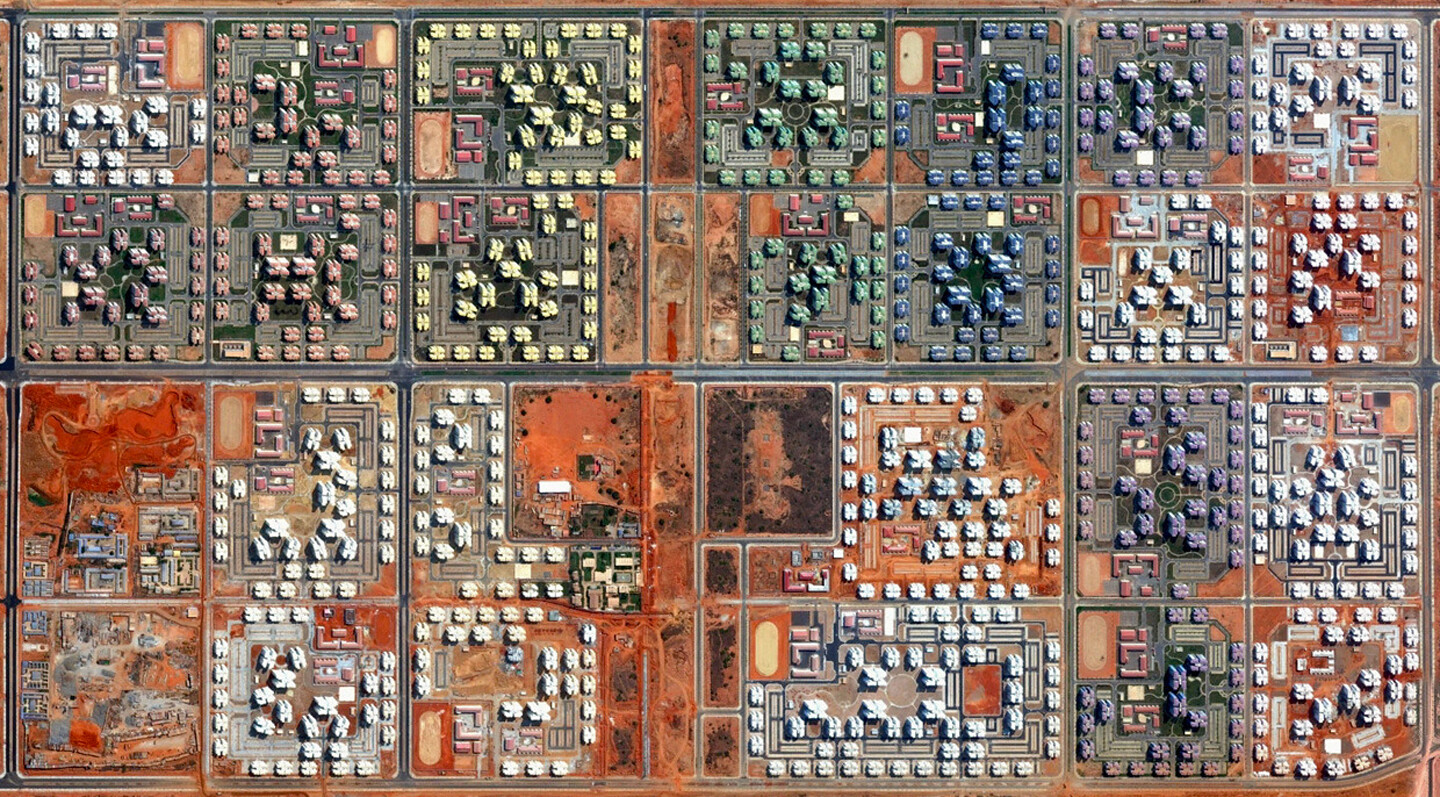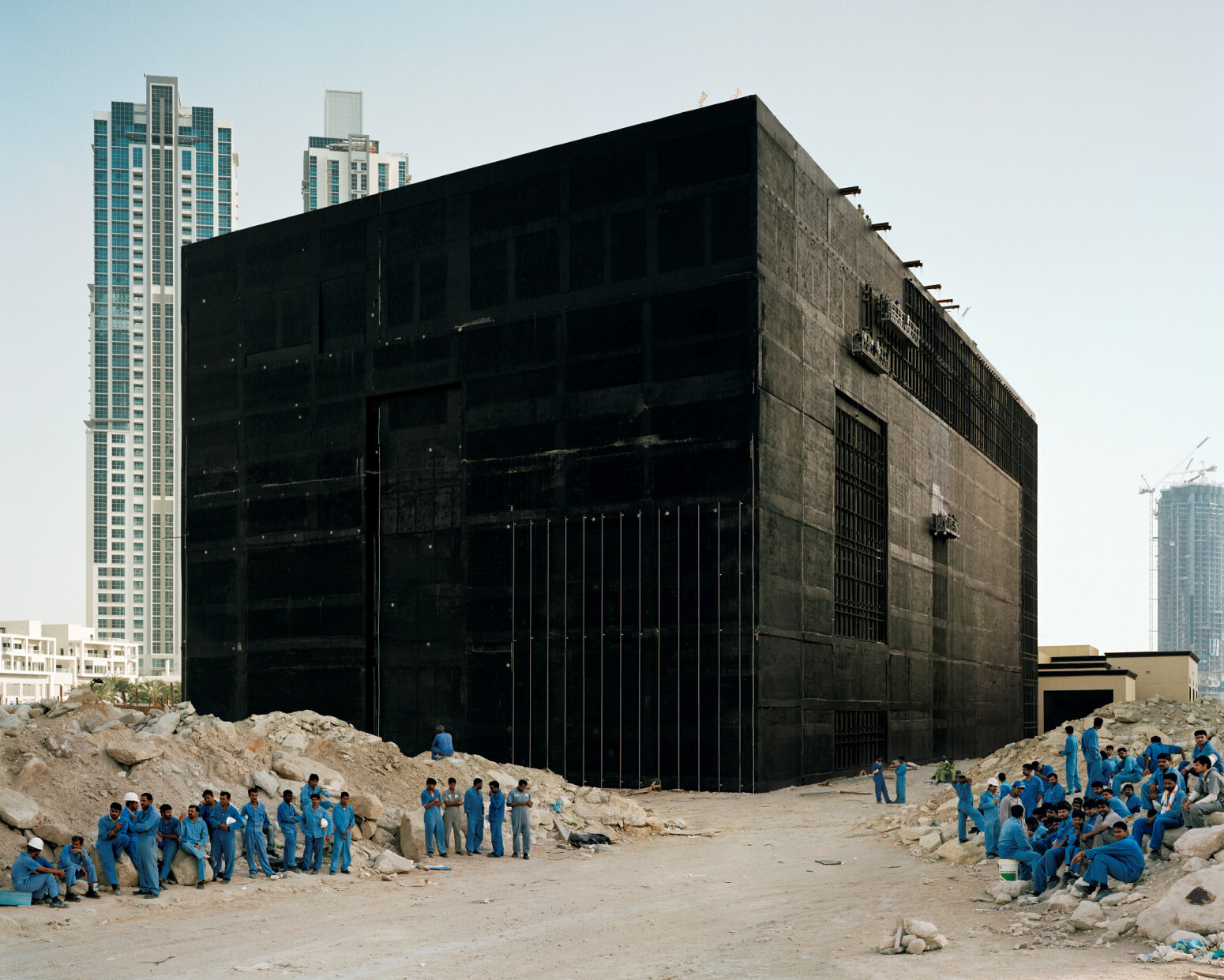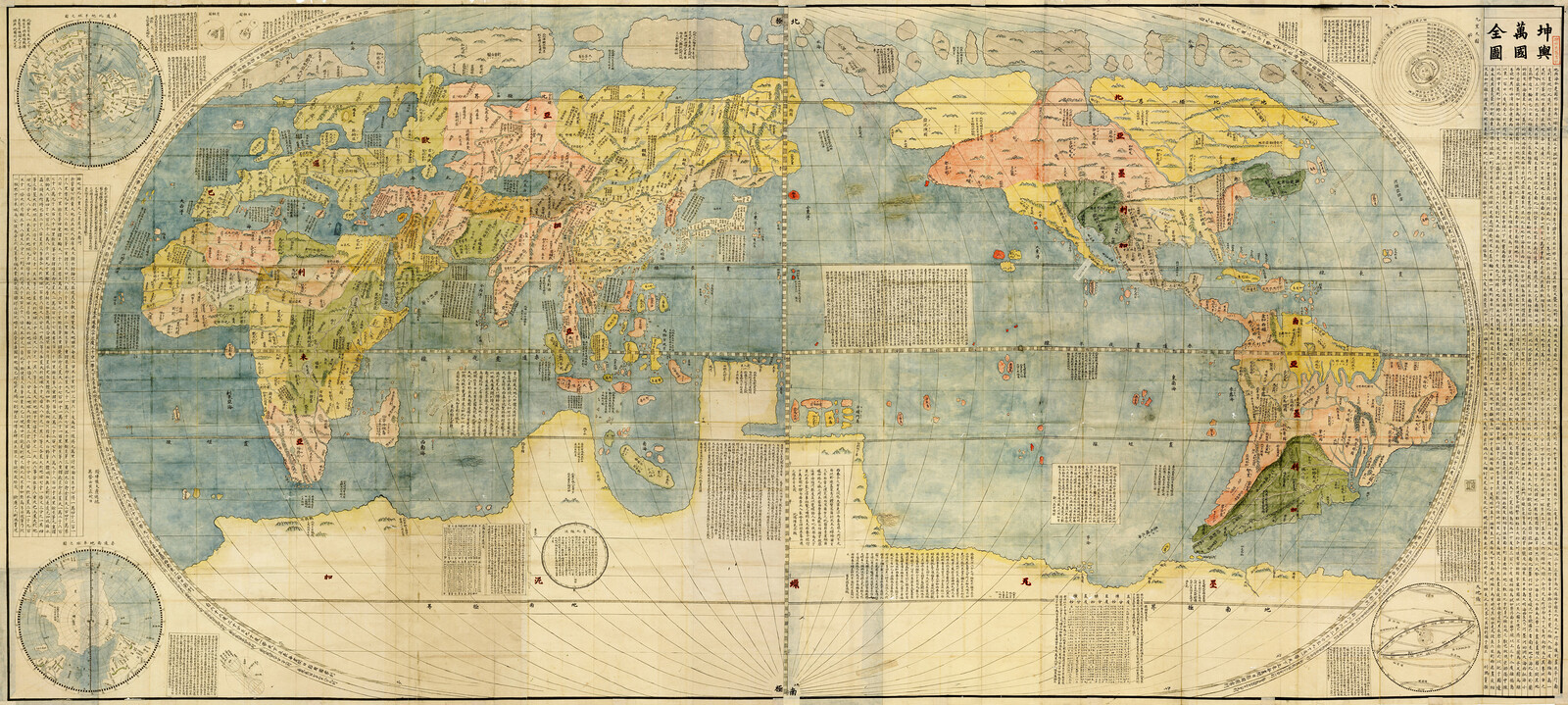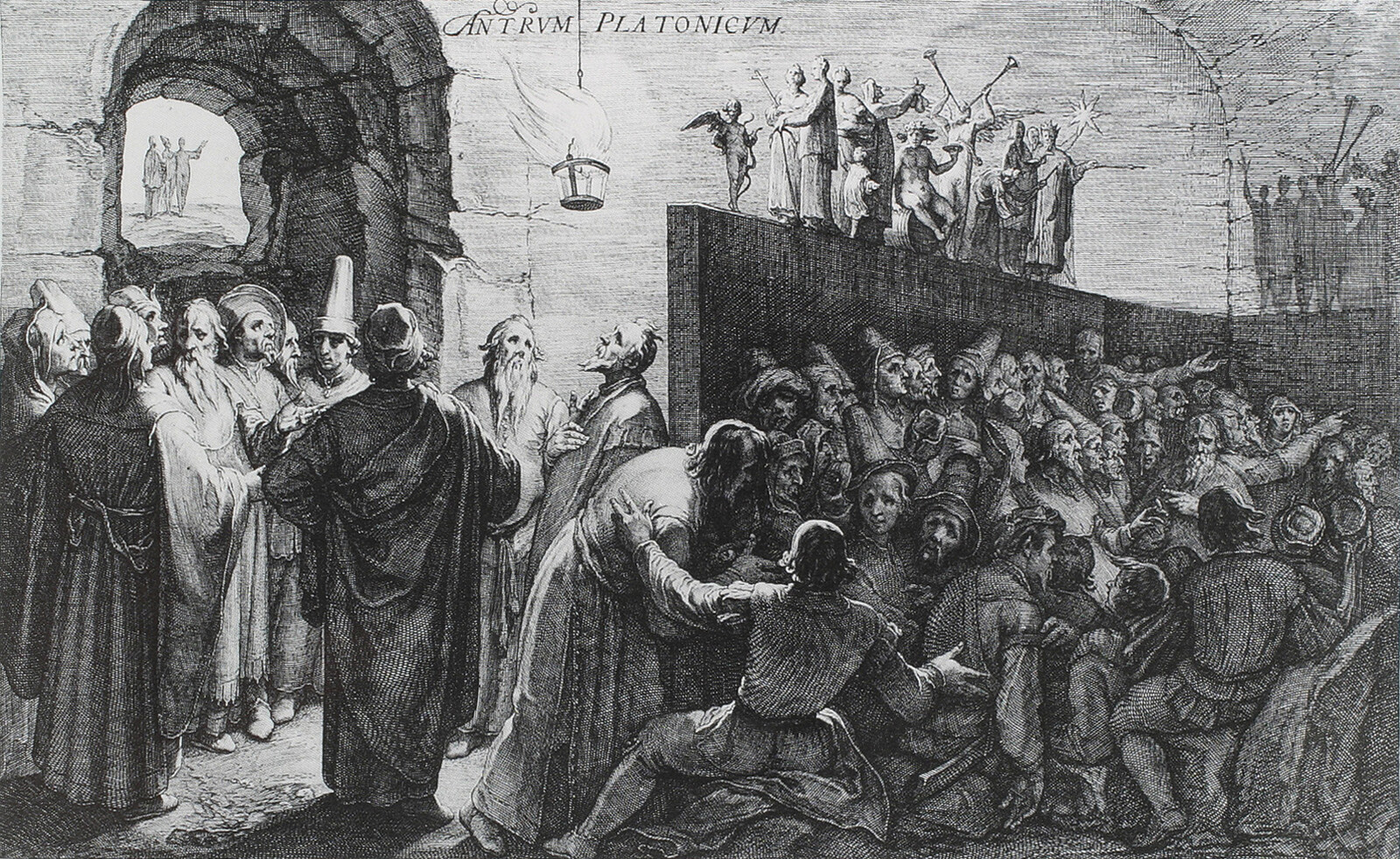One basic way to challenge architectural theory to think globally is to challenge it to think beyond itself. Thus, this syllabus aims to connect architectural theory with global issues through a series of themes directed outside of the confines of traditionally-conceived disciplinarity. This, of course, is not a new idea in architectural theory, as the central place of literary and textual practices of deconstruction in late-twentieth-century architectural theory demonstrates. However, the aim here is to turn not to an outside field for concepts to impress upon architecture, and in particular in relationship to architectural form. Rather, the five themes developed—property, labor, inhabitation, media, and environment—are meant to situate architecture within diverse and complex material and intellectual exchanges that circulate across the globe.
Each theme is meant to provide roughly self-sufficient units that can be arranged in any order. They aim to use theory written from both within and without architectural discourse to “unbound” architecture by setting its interior in relationship to various outsides. First, the consideration of property positions architecture in relation to issues of ownership, security, and the political and legal divisions of space. This theme includes considerations of the ways in which architecture has participated in colonialism and racial segregation, but also more broadly the ways architecture has been produced by and helped produce ideologies of how life can be planned and divided up. The second theme, labor, sets architecture in relationship to its material and intellectual production. It examines how labor has been theorized in the age of technological reproduction, including considerations of colonial histories of labor and reproduction, histories of intellectual property, the socio-politics of higher education, and how architectural construction has been conceived in revolutionary contexts, including the Soviet Union and Maoist China. The third theme, inhabitation, focuses on the human body and how architecture participates in its activities and passivities of inhabiting space. In particular, it considers how theorizations of race, gender, class, and disability can guide consideration of the diversity of bodies that encounter and shape architecture. The fourth theme, media, examines how drawings, digital media, and their embodiments have participated in the construction of architectural discourse in diverse global contexts. This theme focuses not only how architects represent building but also how architecture as a practice represents itself in the global market. The final theme, environment, situates architecture in relationship to the earth. It pays particular attention to notions of climate change, political ecology, and globalization, and investigates these issues through architecturally-influential concepts such as development, modernization, and heritage.
These five themes are not meant to set the boundaries of architectural discourse, but rather to open up ways in which its discourse and practice are connected to many other fields. The globalization of theory should not be understood as a new attempt at universalization or essentialization, but rather as a recognition that architecture can always be different than it currently is.
Property, Session 1: Land, As Property and Appropriation
Etymologically, property suggests a form or extension of selfhood. Attendant with the concomitant development of colonialism and the modern nation-form in Europe, the conversion of land into private property was pivotal in formulating new relationships between landowning classes, the state, labor, and capital. With chattel slavery and private property, the scope and meaning of ownership underwent a radical expansion, which was marked by new architectural devices—and representations—of ownership as a form of modern citizenship. This session examines both capitalist and non-capitalist modes of land tenure and how these were bound up with different societal forms, and sets the stage for considering architectural modes of settlement and real-estate development in the nineteenth through the twenty-first centuries.
Readings
‧ John Locke, “On Property,” in Two Treatises of Government, trans. Peter Laslett (Cambridge: Cambridge University Press, 1988).
‧ Jean-Jacques Rousseau, On the Social Contract, trans. Donald A Cress (Indianapolis: Hackett, 2019 [1762])
‧ Patricia Seed, “Owning Land by Labor, Money, and Treaty,” in American Pentimento: The Invention of Indians and the Pursuit of Riches (Minneapolis: University of Minnesota Press, 2001).
‧ Mark Busse, “Property” in A Handbook on Economic Anthropology, ed. James G. Carrier (Cheltenham and Northampton: Edward Elgar Publishing, 2012), 111–127.
‧ Étienne Balibar, “The Reversal of Possessive Individualism,” in Equaliberty: Political Essays, trans. James Ingram (Durham and London: Duke University Press, 2014).
‧ Anna Lowenhaupt-Tsing, “Frontiers of Capitalism,” in Friction: An Ethnography of Global Connections (Princeton: Princeton University Press, 2005).
Property, Session 2: Real Estate, Or, the (Racial) Production of “Main Street”
As a device for reifying land’s value as capital, architecture’s effectiveness in processes of urban revaluation depends not only on financial devices of discrimination but also on aesthetic-semiotic modes of signaling value. Helping to mark the (often racialized) distinction between “suitable” and “unsuitable” economic subjects, domestic and commercial architectures are complicit in staking out new domains of financial expansion and, conversely, disinvestment. This session considers the concept of “the decorated shed” in relation to these systems of financialization and racial production.
Readings
‧ Adrienne Brown and Valerie Smith, “Introduction” in Race and Real Estate (Oxford and New York: Oxford University Press, 2016): 3–13.
‧ Paula Chakravartty and Denise Ferreira da Silva, “Accumulation, Dispossession, and Debt: The Racial Logic of Global Capitalism,” American Quarterly 64, no 3: Race, Empire, and the Crisis of the Subprime (September 2012): 361–385.
‧ Robert Venturi, Denise Scott Brown, and Steven Izenour, “From La Tourette to Levittown” and “Silent White Majority Architecture,” in Learning from Las Vegas (Cambridge: MIT Press, 2001 [1972]): 152–155.
‧ Andrew Herscher, Unreal Estate Guide to Detroit (Ann Arbor: University of Michigan Press, 2012).
Property, Session 3: Planning and “Unplanning”
Interrogating the mutually-constitutive relationships between formal and informal architectures, formal and informal markets, and macro- and micro-finance, this session attends to various modes of architectural production that operate at the interstices between the formal and informal (including self-help architectural planning, land-titling schemes, resettlement, and infrastructural developments). Putting pressure on a commonplace critique of “high modernist” planning, we examine how more microscopic, localized processes of planning (and the absence of planning) work to instate modes of class and ethno-racial difference.
Readings
‧ Ananya Roy, “Slumdog Cities: Rethinking Subaltern Urbanism,” International Journal of Urban and Regional Research 35 (2011): 223–238.
‧ Teresa Caldeira “Peripheral Urbanization: Autoconstruction, Transversal Logics, and Politics in Cities of the Global South” Environmental Planning D: Society and Space 35, no. 1 (February 2017): 3–20.
‧ Faiza Moatsaim, “Entitled Urbanism: Elite Informality and the Reimagining of a Planned Modern City,” Urban Studies, 56, no. 5 (2018): 1009–1025.
‧ James C. Scott, “Compulsory Villagization in Tanzania,” in Seeing Like a State: How Certain Schemes to Improve the Human Condition Have Failed (New Haven: Yale University Press, 1998).
‧ Rem Koolhaas, “Lagos,” in Mutations (Barcelona: Actar, 2000), 651–699.
‧ Timothy Mitchell, “The work of economics: How a discipline makes its world,” European Journal of Sociology 46, no. 2 (December 2005): 297–320.
Labor, Session 1: Alienation
The concept of alienation serves as a historical and conceptual lynch-pin between land ownership (i.e. the alienation of land under regimes of privatization) and the view of labor as alienable (i.e. according to philosophers and economists from the European Enlightenment onward). This session focuses on the historical relationship between the alienation of land and theories of alienable labor and consciousness, beginning with the English enclosures movements and subsequent industrialization up through Soviet Socialist Realism. As a counterpoint—or perhaps complement—to Marxian theories of alienation, Hegel and Ruskin offer theological and quasi-theological concepts of spiritual-material synthesis as an antidote to the alienation of spirit.
Readings
‧ Karl Polanyi, “The Self-Regulating Market and the Fictitious Commodities, Land, Labor, Money,” in The Great Transformation: The Political and Economic Origins of Our Time (Boston: Beacon Press, 2001 [1944]).
‧ G.W.F. Hegel, Phenomenology of Spirit, trans. J. Hoffmeister (Oxford; Oxford University Press, 1977 [1807]).
‧ John Ruskin, “Life,” in The Seven Lamps of Architecture (1849).
‧ Karl Marx, “The Fetishism of Commodities and the Secret Thereof,” in Capital, Volume I, trans. Ben Fowkes (London: Penguin Books, 1990).
‧ Georg Simmel, “The Money Equivalent of Personal Values,” in The Philosophy of Money, trans. Kaethe Mengelberg, et al. (Abingdon and New York: Routledge Classics, 2011 [1900]).
‧ Hannah Arendt, “Labor,” The Human Condition (Chicago: The University of Chicago Press, 2018).
‧ Evgeniĭ Aleksandrovich Dobrenko, “Socialist Relations of Production: Lechery for Labor,” in Political Economy of Socialist Realism (New Haven and London: Yale University Press, 2007).
Labor, Session 2: Design
As distinct from education in architecture or in specific craft techniques, “design” appears as a disciplinary rubric in the late nineteenth-century with the proposition that competency in architecture and the various industrial arts consists not in specific craft techniques so much as in elementary skills of mind-body coordination—requisite to the art of drawing—and foundational to all branches of the plastic and visual arts. The development of design pedagogy arose as a response to industrial production, which required designers to be proficient not only in a craft but in the art of instruction—that is, in trans-coding the artwork into a procedural method capable of integrating human- machine modes of labor. As a form of trans-coding a material object into a process of materialization, design belonged to the rise of intellectual property in the technologically-reproduced object and hence to the rise of a racial division of labor.
‧Readings
Ellen Weiss, “Taylor at Tuskegee,” in Robert R. Taylor and Tuskegee: An African-American Architect Designs for Booker T. Washington (Montgomery: NewSouth Books, 2012).
‧ Mary N. Woods, “Traning and Education,” From Craft to Profession: The Practice of Architecture in the Nineteenth Century (Berkeley: University of California Press, 1999).
‧ Zeynep Çelik Alexander, Kinaesthetic Knowing: Aesthetics, Epistemology, Modern Design (Chicago: University of Chicago Press, 2017).
‧ T’ai Smith, “Weaving As Invention: Patenting Authorship,” in Bauhaus Weaving Theory: From Feminine Craft to Mode of Design (Minneapolis: University of Minnesota Press, 2014).
‧ Arindam Dutta, “Of AbOriginal and Copyright,” in The Bureaucracy of Beauty: Design in the Age of Its Global Reproducibility (London: Routledge, 2007).
‧ Manuel Shvartzberg, “Foucault’s ‘environmental power’: Architecture and neoliberal subjectivization”, in The Architect As Worker: Immaterial Labor, the Creative Class, and the Politics of Design, ed. Peggy Deamer (London and New York: Bloomsbury Academic, 2015).
Labor, Session 3: Construction
In the latter half of the twentieth century, domestic auto-construction—often in the form of “self-help” architectures—became construed as a form of nation-building and incipient citizenship in Asia, Africa, and Latin America. Self-built architectures were framed alternatively as a form of burgeoning entrepreneurialism and investment (e.g. in US interventions in postcolonial contexts of “development”), as a form of community-formation and resource-redistribution (in Maoist China), and as means of resuscitating ancient national heritage (in Egyptian schemes of eviction and resettlement).
Readings
‧ Zixian Lu, “Making a New World and a New People: Cold War, Maoist Austere Architecture, and the ‘Rammed Earth Campaign”, Journal of Contemporary Chinese Art 4, no. 2–3 (September 2017): 269–285.
‧ Doris Bittar, “Cultural Settlements: Gulf Labor and Global Solidarity,” Women’s Studies Quarterly 42, no. 3–4 (Fall/Winter 2014): 253–266.
‧ Hassan Fathy, Architecture for the Poor: An Experiment in Rural Egypt (Chicago: University of Chicago Press, 1973).
‧ Richard Biernacki, “The Control of Time and Space,” in The Fabrication of Labor: Germany and Britain, 1640-1914 (Berkeley: University of California Press, 1997).
‧ Nancy H. Kwak, “Homeownership in an Era of Decolonization,” in A World of Homeowners: American Power and the Politics of Housing Aid (Chicago: University of Chicago Press, 2015).
‧ Dimitri Papadopoulos, “Crafting Ontologies,” in Experimental Practice: Technoscience, Alterontologies, and More Than Social Movements (Durham: Duke University Press, 2018).
Inhabitation, Session 1: Habitat / Habitus
Drawing from the social sciences, post-War modernist architects sought to develop culturally-appropriate subaltern architectures through the translation of cultural habitus into habitat. Implicitly, this focus on cultural “patterns” was deemed applicable to low-end housing or to colonial and neo-colonial development. Whether considered from the angle of the necessities of utilitarian survival, the practices of individual placemaking, or the politics of collective identity, architecture participates in the creation of environments for inhabitation. This session turns its attention to theories of inhabitation, and in particular to the ways in which theories of inhabitation are developed in specific positions that are shaped by frameworks and experiences such as those of gender, class, and place.
Readings
‧ Jane E. Goodman “The Proverbial Bourdieu: Habitus and the Politics of Representation in the Ethnography of Kabylia” American Anthropologist 105, no. 4 (2003): 782–793.
‧ Pierre Bourdieu, Algeria 1960 (Cambridge: Cambridge University Press 1979).
‧ Françoise Choay, “Structuralism and Semiology in Architecture,” in Meaning in Architecture, eds. Charles Jencks and George Baird (London: Barrie and Rockliff, 1969).
‧ Robert Oxman, Hadas Shadar, and Ehud Belferman “Casbah: Brief History of a Design Concept,” Urbanism: Arq 6, no. 4 (2002): 321–336.
‧ Abdoumaliq Simone, “People as Infrastructure: Intersecting Fragments in Johannesburg,” Public Culture 16, no. 3 (2004): 407–429.
Inhabitation, Session 2: Bodies
Bodies and their activities, habitual and otherwise, shape inhabitation in a multitude of ways. Fields such as gender studies, critical race studies, and disability studies have challenged the assumption of a universal body to which architectural theory historically often appealed. This session, drawing in particular on the theorizations of black feminism and disability studies, considers the ways in which the varieties of experience may be brought to bear on architecture.
Readings
‧ Alexander G. Weheliye, “Blackness: The Human” and “Bare Life: The Flesh,” in Habeas Viscus: Racializing Assemblages, Biopolitics, and Black Feminist Theories of the Human (Durham: Duke University Press, 2014), 17–45.
‧ J. Kent Fitzsimons, “Seeing Motion Otherwise: Architectural Design and the Differently Sensing and Mobile,” Space and Culture 15, no. 3 (August 2012): 239–257.
‧ Jos Boys, “Starting from Disability,” in Doing Disability Differently: An alternative handbook on architecture, dis/ability and designing for everyday life (London: Routledge, 2014), 9–60.
‧ George Yancy, “The Elevator Effect: Black Bodies/White Bodies,” in Black Bodies, White Gazes: The Continuing Significance of Race (Lanham: Rowman & Littlefield, 2008), 1–31.
‧ Iris Marion Young, “Throwing Like a Girl: A Phenomenology of Feminine Body Comportment, Motility, and Spatiality,” in Throwing Like a Girl and Other Essays in Feminist Philosophy and Social Theory (Bloomington: Indiana University Press, 1990), 141–159.
Inhabitation, Session 3: Subaltern Identity
Of particular concern for the ways in which a diversity of bodies interact with architecture are questions of recognition, legibility, voice, and agency. This session turns to theorization of the other, looking both at the character of subaltern identity and at the ways in which colonizing subjects use subaltern bodies to position themselves.
Readings
‧ Sara Ahmed, “The Orient and Other Others,” in Queer Phenomenology: Orientations, Objects, Others (Durham: Duke University Press, 2006), 109–156.
‧ Christina Sharpe, “The Ship,” in In the Wake (Durham: Duke University Press, 2016), 25–67.
‧ Elizabeth Darling, “A citizen as well as a housewife,” Negotiating Domesticity: Spatial Productions of Gender in Modern Architecture, eds. Hilde Heynen and Gulsum Baydar (London and New York: Routledge, 2005), 49–64.
‧ Dolores Hayden, “Nurturing Home, Mom, and Apple Pie” in Domestic Space Reader, eds. Chiara Briganti and Kathy Mezei (Toronto: University of Toronto Press, 2012): 114–115.
‧ Andrew Herscher, Displacements: Architecture and Refugee (Berlin: Sternberg Press, 2017).
Media, Session 1: Architecture’s Medium
Examining the passage from perspective and orthographic representation to the algorithm and digital model, this session investigates the idea of architecture as medium. Central focus is on the changing ways architects see, read, and use the images and words of architecture. Special emphasis is placed on how drawings, digital media, and their embodiments have participated in the construction of the architectural discourse in diverse global, post-colonial, and feminist contexts.
Readings
‧ Robin Evans, The Projective Cast: Architecture and Its Three Geometries (Cambridge: MIT Press, 2000).
‧ Lance Hosey. “Hidden Lines: Gender, Race, and the Body in Graphic Standards,” Journal of Architectural Education 55, no. 2 (2001): 102-112.
‧ Hyungmin Pai, The Portfolio and the Diagram: Architecture, Discourse, and Modernity (Cambridge: MIT Press, 2002).
‧ Brian Larkin “The Materiality of Cinema Theaters in Northern Nigeria” in Media Worlds, eds. Faye D Ginsburg, Lila Abu-Lughod, and Brian Larkin (Pasadena: University of California Press, 2002), 319–336.
Media, Session 2: Digital Media and Workspace
According to several architects and critics, architecture no longer embodies concepts, symbols, and ideologies. To bypass the formal conundrums of post‐modernity, they have concentrated on the development of original theories and the use of new media. This session focuses on the digital turn and the recent rise to pre-eminence of both computer-based design and production. Special emphasis is placed on the investigation of the culture and bias brought by the use of this medium, and the exploration of how the adoption of computers has changed the work of architects together with the appearance, structure, and program of the architectural office.
Readings
‧ Mario Carpo, “The Digital and the Global (1996),” in The Digital Turn in Architecture 1992-2010 (Chichester: Wiley and AD, 2013), 57–61.
‧ Reinhold Martin, “The Physiognomy of the Office” and “Computer Architectures,” in The Organizational Complex: Architecture, Media, and Corporate Space (Cambridge: MIT Press, 2003), 80–121 and 156–181.
‧ William J. Mitchell, “The Revenge of Place” in This Is Not Architecture: Media Constructions, ed. Kester Rattenbury (New York: Routledge, 2002): 45–53.
Media, Session 3: Integrated Practices and Marketability
This session investigates the emergence of the so-called integrated project delivery and its ability to compress design and construction. Introducing the mobility and politics of knowledge surrounding the practice, reception, and experience of architecture, particular attention is paid to how space is designed and experienced in oral versus writing cultures. Points of interest are the definition of the idea of participation, the examination of the so-called actor-network theory (as applied to architecture), and its controversial approach to materiality, relationality, and process.
Readings
‧ Lars Andersen, Peter Danholt, Kim Halskov, Nicolai Brodersen Hansen, and Peter Lauritsen, “Participation as a matter of concern in participatory design,” CoDesign 11, no. 3-4 (2015): 250–261.
‧ Kjetil Fallan, “Architecture in action: Traveling with actor-network theory in the land of architectural research,” Architectural Theory Review 13, no. 1 (2008): 80–96.
‧ Jay Wickersham, “From Disinterested Expert to Marketplace Competitor: How Anti-Monopoly Law Transformed the Ethics and Economics of American Architecture in the 1970s,” Architectural Theory Review 20, no. 2, (2015): 138–158.
Environment, Session 1: Theories of Environment
This session investigates mythologies and ideologies about the environment and their complex theoretical geography. Through the examination of the idea of place versus space, the session defines concepts such as nature, environment, and wilderness, placing emphasis on the suspension of the classical dichotomy of nature and society. In its place, the session examines the constitution of communities and collectives incorporating humans and nonhumans and building on the experiences of the sciences. Cultural studies, political ecology, history, geography, and contemporary art are woven together with architectural theory to provide an examination of these multiple senses of environment as applied by and to architecture.
Readings
‧ William Cronon, “The Trouble with Wilderness; or, Getting Back to the Wrong Nature,” in Uncommon Ground, Rethinking the Human Place in Nature (New York: W.W. Norton, 1983): 69–90.
‧ Lucy R. Lippard, “Being in Place,” in The Lure of the Local: Senses of Place in a Multicentered Society (New York: New Press, 1997): 32–38.
‧ Bruno Latour, “Why Political Ecology Has to Let Go of Nature,” in Politics of Nature: How to Bring the Sciences into Democracy (Cambridge: Harvard University Press, 2004): 9–53.
‧ Yates McKee, “Haunted Housing: Eco-Vanguardism, Eviction, and the Biopolitics of Sustainability in New Orleans,” Grey Room 30 (Winter 2008): 84–113.
Environment, Session 2: Climate Change
Anthropogenic processes have had planetary effects, and architecture has played a central role in the transformations of the globe that have ensued. This session examines and connects notions like the Anthropocene, climate change, and globalization. Focusing on the responses to the contemporary environmental crisis, the session offers diverse and global perspectives on the role played by architecture in long-lasting changes of weather patterns. Special emphasis is placed on humanist critiques of climate change and the Anthropocene while harnessing the notion’s potential for challenging political and architectural imagination.
Readings
‧ Dipesh Chakrabarty, “The Climate of History: Four Theses,” Critical Inquiry 35, no. 2 (Winter 2009): 197–222.
‧ Donna Haraway, “Staying with the Trouble: Anthropocene, Capitalocene and Chthulucene,” in Anthropocene or Capitalocene? Nature, History, and the Crisis of Capitalism, ed. Jason W. Moore (Chicago: PM Press, 2016), 34–77.
‧ Gabrielle Hecht, “Interscalar Vehicles for an African Anthropocene: On Waste, Temporality, and Violence,” Cultural Anthropology 33, no. 1 (2018): 109–141.
Environment, Session 3: Heritage, Development and Modernization
According to several scholars, the megacity of the so-called Global South embodies the most extreme instance of economic injustice, ecological unsustainability, and spatial apartheid ever confronted by humanity. This session investigates concepts such as development, modernization, and heritage in the Global South, its environments, and its metropolises. Questioning common misconceptions and stereotypes on the evolutionary pathways long assumed by architects and social scientists, the session examines theories developed from an “ex-centric” vantage, giving an ironic twist to the fetishization of the environment residing in the South.
Readings
‧ Gayatri Chakravorty Spivak, “Megacity,” Grey Room 1 (2000): 8–25.
‧ Jean Comaroff, John L. Comaroff, Theory from the South: Or, How Euro-America is evolving toward Africa (Boulder and London: Paradigm, 2012): 1–19.
‧ Lucia Allais, Designs of Destruction: The Making of Monuments in the Twentieth Century (Chicago: University of Chicago Press, 2018).
‧ Rob Nixon, “Pipedreams: Ken Saro-Wiwa, Environmental Justice, and Micro-minority Rights,” in Slow Violence and the Environmentalism of the Poor (Cambridge: Harvard University Press, 2011).
‧ Julian Raxworthy, “’A Rose by Any Other Name’: The Long Journey of Mirabilis Jalapa to Europe, Gugulethu,” Folio 1: Pupae (2017): 20–33.
Theory’s Curriculum, a project by e-flux Architecture and Joseph Bedford, is produced with the support of the Global Architectural History Teaching Collaborative; Virginia Tech Center for Excellence in Teaching and Learning, College of Architecture and Urban Studies, and School of Architecture + Design; School of Architecture, Syracuse University; John H. Daniels Faculty of Architecture, Landscape, and Design, University of Toronto; Department of Architecture, Wentworth Institute of Technology; and Department of Architecture, Iowa State University College of Design. Special support for the project in its initiation, fundraising, and guidance was provided by Joseph Godlewski.

